Waves
Book Extract
The storm of 1953 is a good example of how waves in the ocean come in many forms, and not just the breaking waves we see on the beach. There is the gentle slap of ripples against the hull of a boat, breaking waves so eagerly sought by surfers, giant waves in the Southern Ocean big enough to sink an oil tanker, and there are the monsters of the oceans – tsunamis – which can wipe out whole coastal villages. The tides too create a wave which floods our shores twice a day at high water. The way in which these different waves are formed might vary, but all waves are governed by the same physical laws of the ocean.
Waves that break around our coastline are created by wind blowing across the water. Wind transfers its energy to the surface of the water through friction; this causes small ripples to form on the surface and, if the wind continues to blow, then more energy is transferred, and the waves will grow.
Just how big any individual wind wave becomes depends on three main factors: the strength of the wind, the duration it blows, and the distance the wave travels – called the fetch.
The first waves to be created when wind begins to blow over a perfectly smooth water surface are capillary waves – or what we usually call ripples. Surface tension holds the water molecules together, which is the same force that allows insects to be supported on the surface of water. Capillary waves are very small, with a wavelength of less than 1.75cm (0.7in) between crests.
If wind speed increases, then the next stage of waves to develop are gravity waves; these overcome surface tension and become limited instead by the force of gravity. If the wind continues to blow, energy is continually transferred to the waves and the wave grows. If the wind dies away, the waves quickly disappear because of the combined effects of surface tension and gravity.
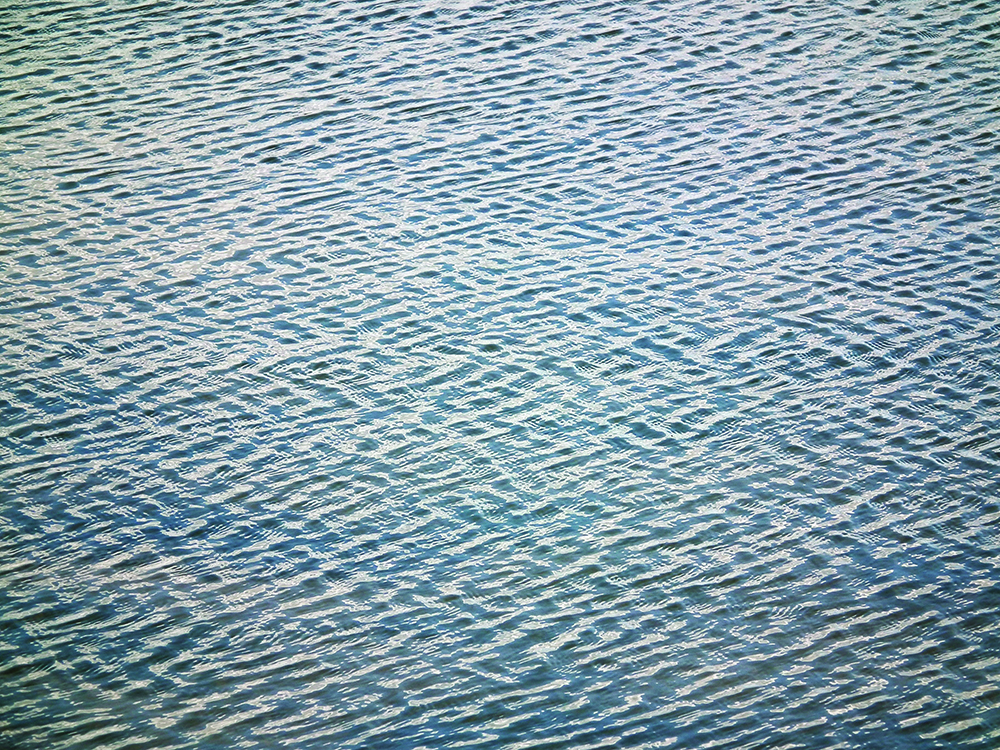
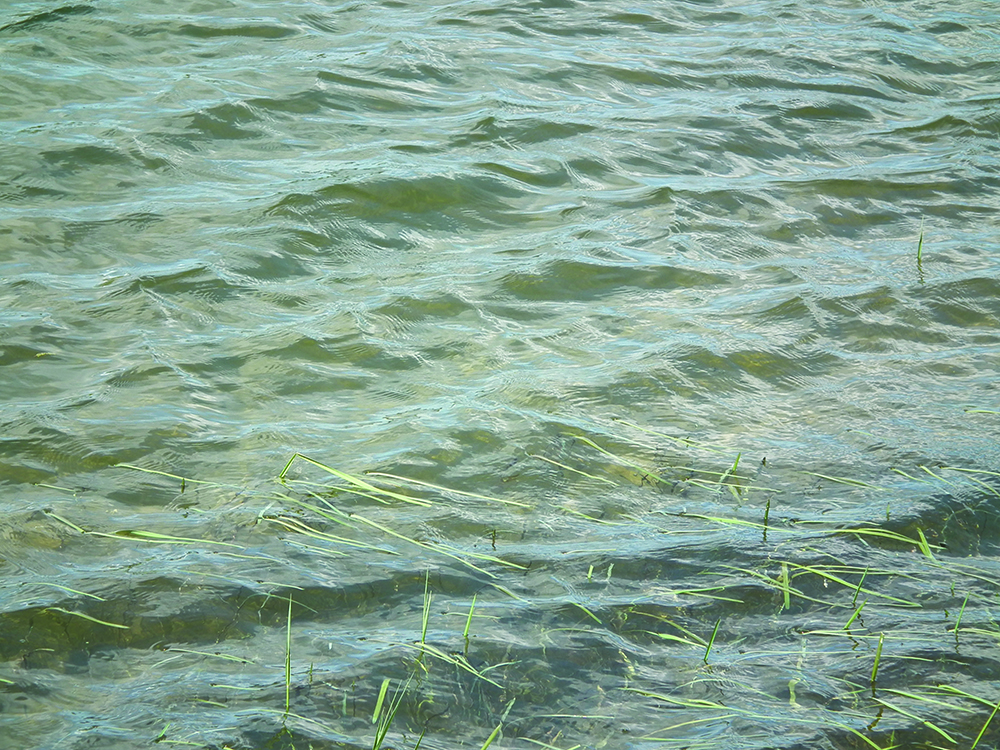
Capillary waves (top) begin to develop as soon as there is a light breeze but die away if the wind drops. If the wind continues to blow, capillary waves develop into gravity waves (bottom).

The development of a capillary wave to a breaking wave. Waves begin to break when the wave height to wavelength ratio exceeds 1:7.
Wave Terminology
Wavelength: the distance between two adjacent crests.
Crest: the highest point of a wave; trough: the lowest.
Wave height: the distance between trough and crest.
Wave frequency: the number of wave crests which pass in a given time period.
Wave period: the time that it takes a wave crest to move from point A to point B.
Amplitude: the maximum height of a wave from still water level; i.e. half the wave height.
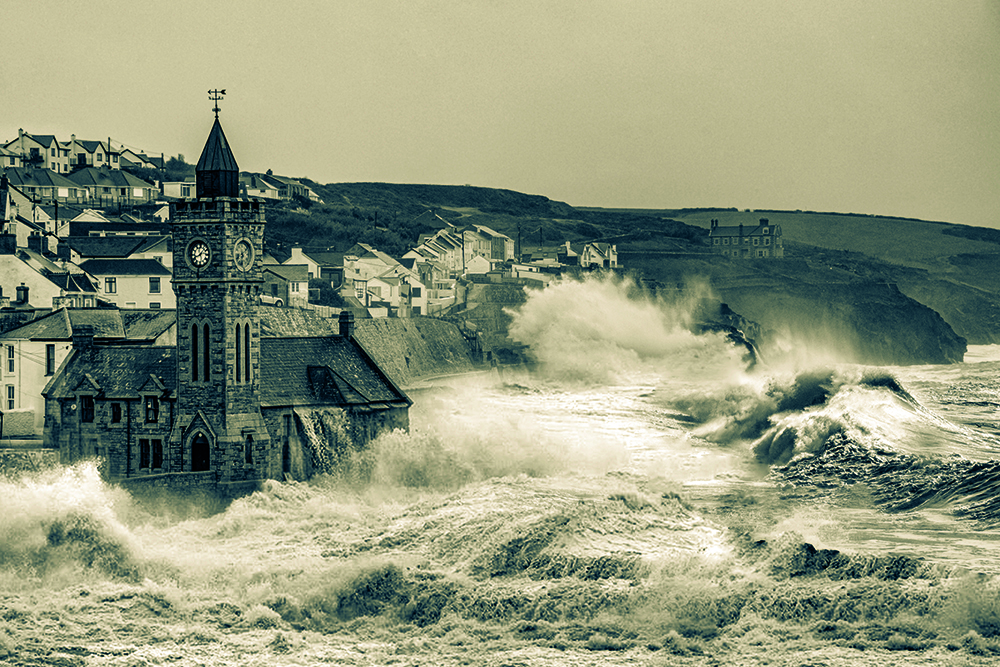
Porthleven in south-west Cornwall takes a battering from Storm Imogen in February 2016. There is nothing between here and Miami except 6,840km (4,250 miles) of uninterrupted Atlantic Ocean.
Surface waves are called progressive waves, which are essentially any wave that can be seen moving through water. However, surface waves do not actually move water forward (at least not very much), but instead transfer energy – sometimes for very long distances. The water therefore becomes a medium through which kinetic energy, or ‘energy in motion’, passes.
The water in a wave is certainly moving, but only in a circular motion and not horizontally. This is why a gull sitting on the surface appears to bob up and down in the waves rather than move in the direction the waves appear to be travelling. Within the wave, the water particles are working like rollers on a conveyor belt – they rotate to move the belt forward, but the rollers themselves only rotate and do not move forward. (In practice, there is actually a very slight forward movement of water, but very little.)

Anatomy of a progressive wave. Water within a wave moves in a circular motion.
We all experience how waves break as they ‘touch bottom’ every time we go to the beach. In deep water, the shape of a progressive wave is symmetrical for as long as the depth of water is at least twice the wavelength. Once the wave moves into water that is shallower than this, its characteristics change, and the wave begins to steepen. Wave steepness is the ratio of height to wavelength. When wave steepness is less than 1:7, breakers begin to form; when the ratio reaches 1:5, the wave become so steep that the crest topples, and the wave breaks fully. At this point, the water in the wave begins to move physically forward.

Breaking waves in shallow water. If the wavelength is more than half the water depth, then the wave is unaffected; however, as it moves into shallow water, the wave steepens. Once the wave steepness exceeds 1:5, the wave will break on the foreshore.
A breaking wave is potentially very powerful – a cubic metre of seawater weighs over one tonne (one cubic yard weighs 1,728lbs) – by volume, this is as much a small truck. You become aware of the change in the motion of water particles when swimming off a beach. If you swim out into deep water and float, you will bob up and down as each deep-water wave passes, as it moves in a circular motion. However, once in shallow water in the surf zone, even quite modest breaking waves can knock you off your feet; this is because the water is physically moving forward in the wave.
Waves generally add sediment to a beach during the summer (constructive waves) and erode a beach during the winter (destructive waves). Summer constructive waves have a lower wave height and a longer wavelength; therefore, the incoming water (swash) is dominant, and this builds up the beach (see page 33). Bigger waves with shorter wavelength occur in winter, and backwash becomes more dominant; this causes a beach to be eroded during the winter months.
Several factors ultimately limit the size of waves. When the speed of the wave equals the speed of the wind, then no more energy is transferred to the water, and the wave reaches its maximum size unless it interacts with something other than wind. If the wind speed drops, then the wave will reduce in size. Waves will also decline when they become unstable in shallow water and break.

As a wave steepens, it becomes unstable and the top of the wave begins to break. At this point, water begins to move forwards towards the shoreline.
In practice, the seas around the British coastline comprise a mixture of many different sizes of waves, often moving in more than one direction. When a storm passes through an area, for example, waves are blown in different directions as the wind changes its track and intensity. This forms a confused sea.
White caps or white horses are a familiar sight in windy conditions. They form when the crest of a wave increases in size and steepness, becomes unstable, and collapses. Waves lose energy when their crests break, and this limits the size of the wave.
When waves move beyond the area where they are formed, they usually move faster than the local (gentler) winds; steepness then decreases. This results in a swell, which is a long-crested wave that has moved far from its source with little loss of (kinetic) energy. You do not have to go very far from the shoreline along the west coast, to experience swell coming in from the Atlantic.
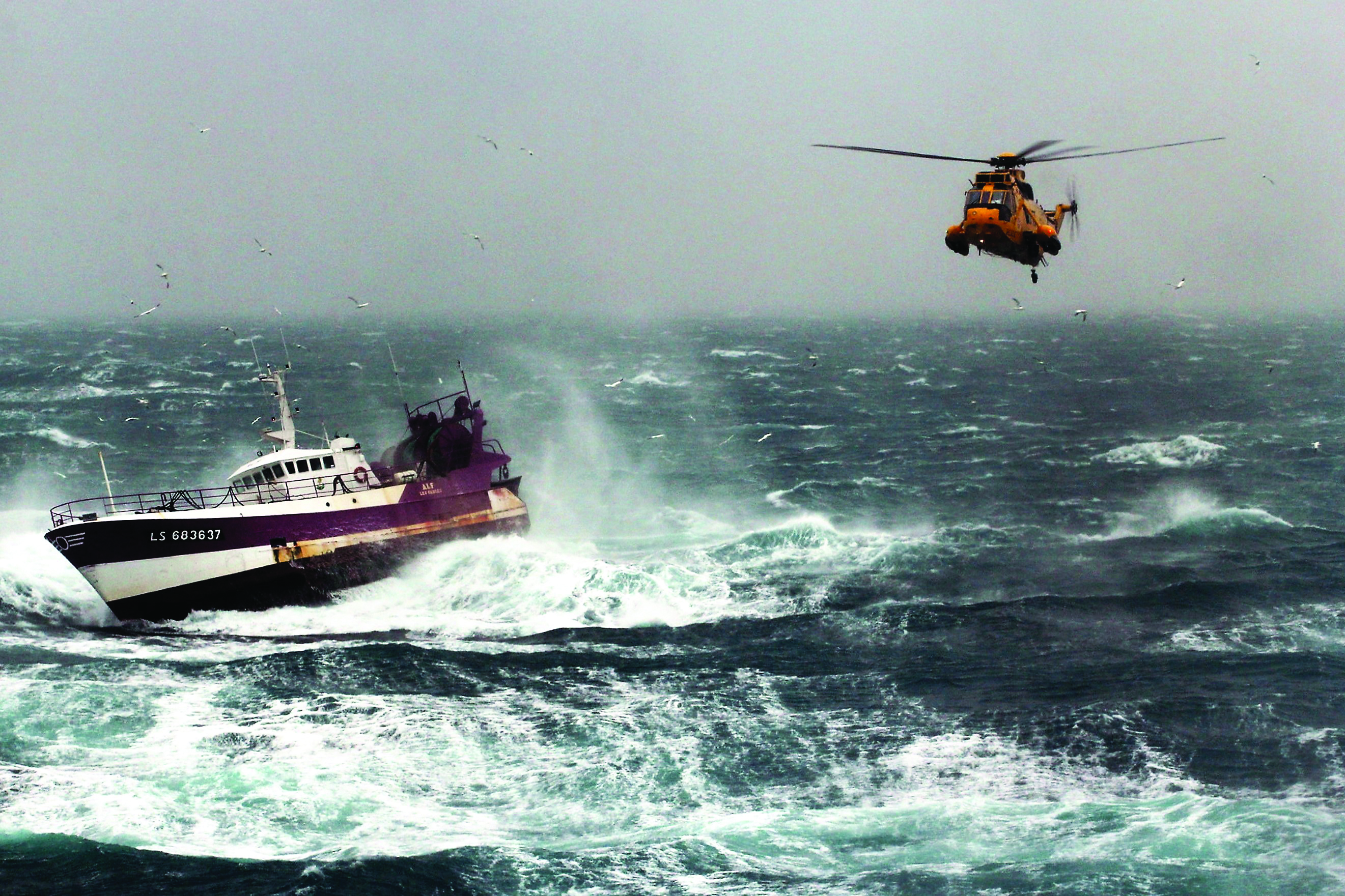
A Royal Air Force Sea King helicopter attempts to lift an injured crew member from the deck of a French trawler in the Irish Sea in a force 8 gale. The boat is being raised 12m (40ft) with each swell. At this wind strength, foam is formed on the sea surface called spume, and the tops of waves are blown away as spindrift, reducing visibility.
Waves are also influenced by tidal currents, and the effect of wind-over-tide is familiar to anyone who goes to sea in small boats. If a current is moving in the same direction as the waves, it increases the wavelength relative to the height of the waves – effectively ‘stretching out’ the wave and making it flatter. The effect is a smoother sea – not because the height of the waves has reduced, but because the wavelength is longer, and the waves are therefore less steep.
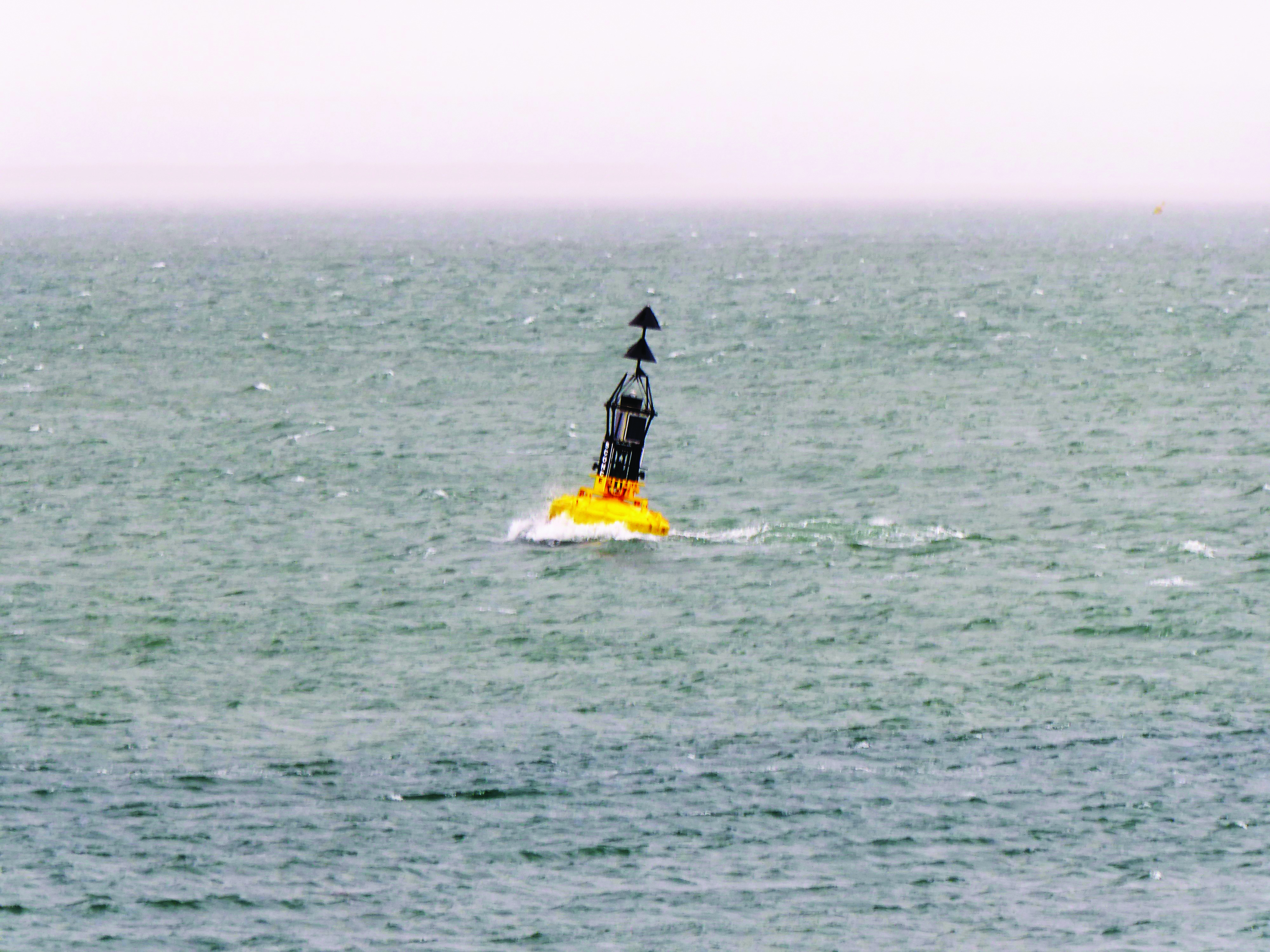
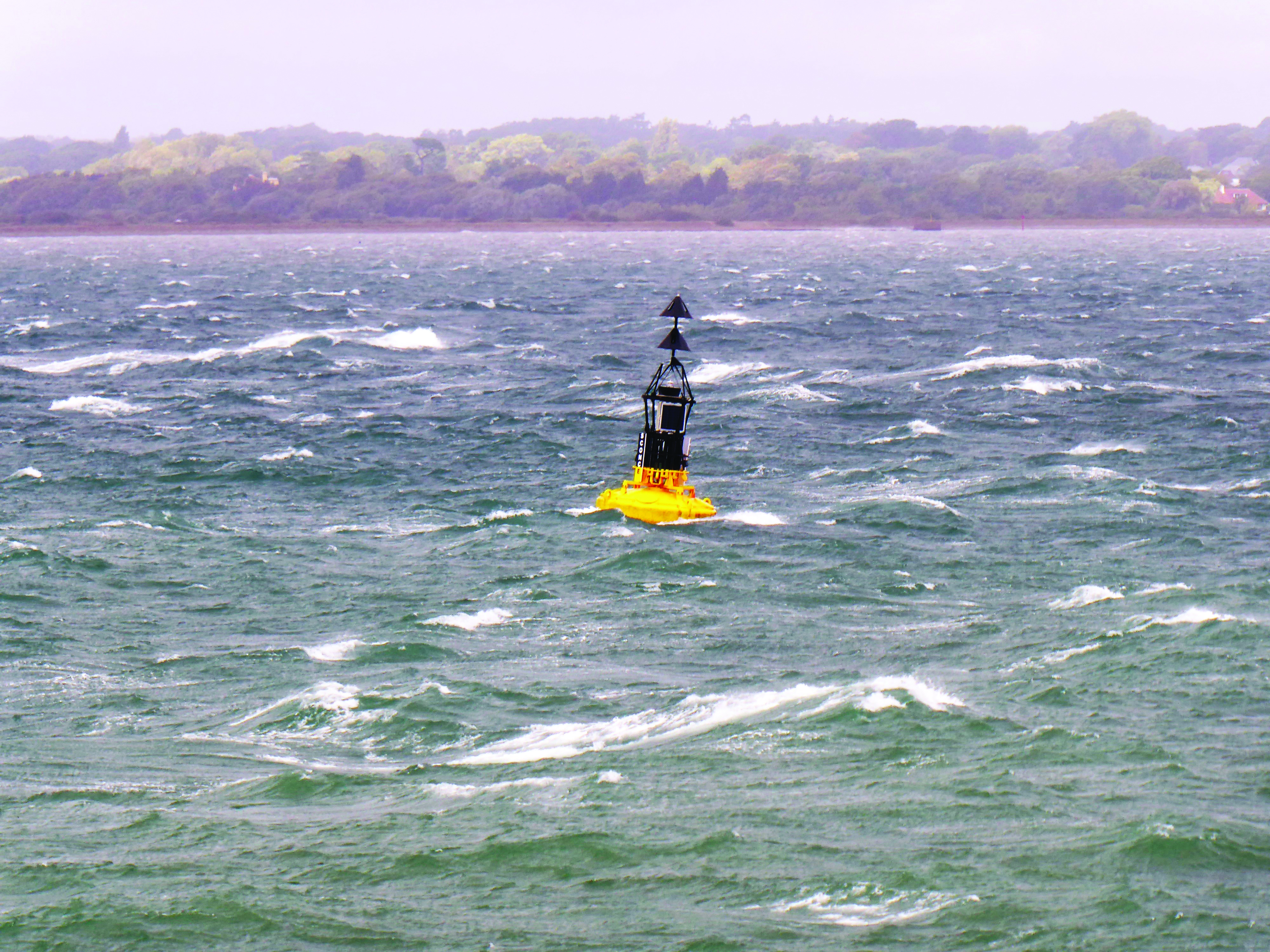
Wind-against-tide: the wind is blowing from left to right in the same direction as the flood tide (left) and flattening the waves; four hours later (right), the tide has turned and the same wind strength is blowing against the ebb, causing choppy ‘wind-against-tide’ conditions and white horses.
Beaufort scale
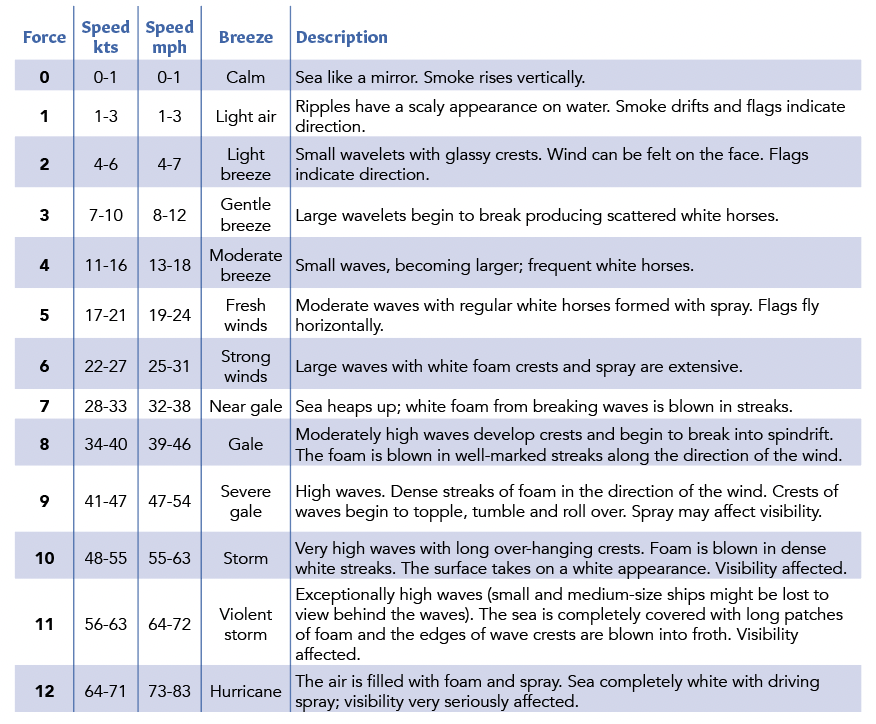
Taken from Coastwise by Peter Firstbrook.
© Not to be reproduced without written permission from Fernhurst Books Limited.